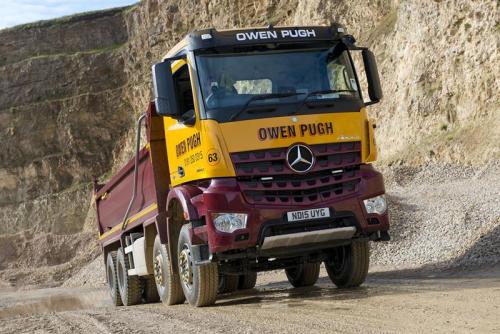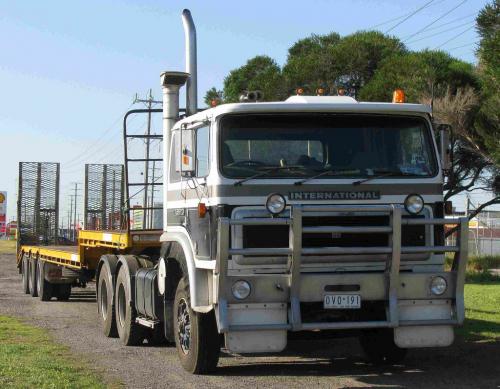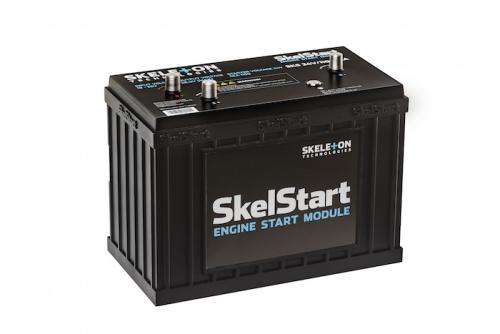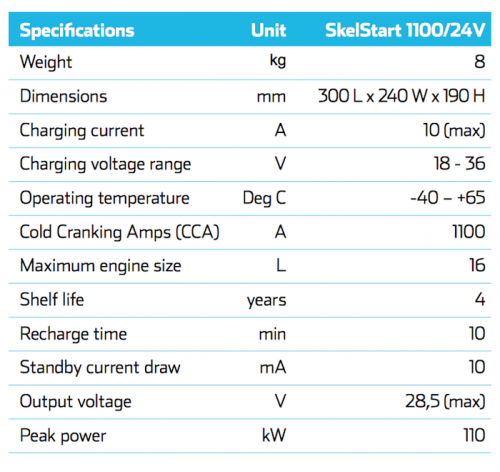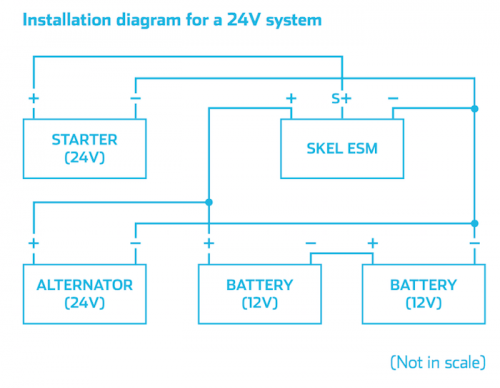
kscarbel2
Moderator-
Posts
18,541 -
Joined
-
Days Won
112
Content Type
Profiles
Forums
Gallery
Events
Blogs
BMT Wiki
Collections
Store
Everything posted by kscarbel2
-
Today, we learn that the police officer who shot and killed a 19-year-old black criminal has been fired. The criminal refused to surrender when asked, and instead decided to try and run away. (http://www.dailymail.co.uk/news/article-3194328/Texas-cop-killed-unarmed-college-football-player-fired.html) Christian Taylor was caught in the act of robbing a car dealership. (The media keeps mentioning that he was a college football player........why? It has no connection with his criminal acts) Did the officer use excessive force? Only the officer knows. But I've long wondered why effective stun guns are not utilized.............we have that technology. What irks me is the family portraying the man as a "fine young man", when he obviously was not. Clearly, his parents did not instill in him the universally accepted good morals and ethics, and the correct sense of right and wrong, that create "a fine young man". A "fine young man" ??? Sorry, I'm just not seeing that here..........are I observe is a destructive individual committing blatant criminal acts. https://www.youtube.com/watch?v=7mP_kJE4D9U
-
Circus or crisis, you be the judge.............. A group of five heavily armed white men calling themselves the Oath Keepers wearing bulletproof vests, camouflage gear and carrying AR15 assault rifles arrived in Ferguson just before midnight and began wandering around amongst the black protesters (http://www.dailymail.co.uk/news/article-3193440/Heavily-armed-Oath-Keepers-inject-new-unease-riot-hit-Ferguson.html). St. Louis County Police Chief Jon Belmar aptly told the media, “Their presence is both unnecessary and inflammatory,”............which it is. These fellows need to get a life and leave law enforcement to the authorities. Missouri’s gun laws permit licensed gun owners to openly carry unless their weapons are “displayed in an angry or threatening manner.” One protester said, “If those were black men walking around with rifles, they probably wouldn’t be living today.” And he’s right, black protesters walking down the street with assault rifles would be immediately arrested. Ironically, a group of black men were arrested on suspicion of firearm possession, but the group of white body camouflage-clothed armor-wearing Oath Keepers (they really should ponder a better name) armed with assault rifles were granted permission to walk through the protests by police officers.............go figure. The point is, NOBODY needs to be walking around America with an assault rifle, and the fact that some people can and do in Missouri is a black eye embarrassment for that state. Meanwhile, stepping outside of the box and standing amongst the world audience, onlookers around the world are shaking their heads if not laughing at us. The once respected United States that still wants to dictate how the rest of the world lives is itself falling apart from within. We’re losing reputation and integrity points faster than a PEZ dispenser.
-
Do NOT buy a Mack brand truck until they introduce common rail. Also, you may have noticed on most tractors now that you can stand up right out of the drivers seat........the cab front area and the sleeper area are one big open space. That's not the case with Mack-branded trucks. The upcoming new cab will address that issue.........relevant if that matters to you.
-
Jim Pearson Transport receives 200th Freightliner truck
kscarbel2 replied to kscarbel2's topic in Trucking News
Scania introduced XPI common rail fuel injection in 2007 for Euro-5, and of course it helps to allow Scania to offer its superb SCR-only Euro-6 (EPA2010) engines which do NOT require a costly VGT or EGR cooler (http://www.scania.com/media/pressreleases/P14402EN.aspx). Daimler also introduced (Bosch) X-Pulse (ACRS) common rail fuel injection in 2007 with the DD13. Now, eight years later, Volvo still hasn't begun fitting common rail on US market engines. In the global market, Volvo finally did begin using common rail for Euro-6 in 2013, six years after everyone else. Apparently, Volvo has a problem switching its older engine platforms over from unit pump to common rail for the U.S. market (EPA2010). As cheap as Volvo is, and having a strong idea of the warranty bills they're paying Mack brand distributors for unit pump injection issues, they'd be saving a lot of money if they were fitting (could fit) common rail injection. -
R MODEL GAUGES NEEDED !
kscarbel2 replied to Pac_With_The_Mack's topic in Electrical, Electronics and Lighting
Your local Mack brand dealer no longer stocks them? What did the good folks at Watts Mack tell you on availability? (Watts Mack is responsible for BigMackTrucks, the world's finest Mack website) -
Jim Pearson Transport receives 200th Freightliner truck
kscarbel2 replied to kscarbel2's topic in Trucking News
For starters, they have trouble-free Bosch ultra-high pressure (2700 bar) common rail fuel injection. Volvo's injector cup issue has been a nightmare for customers, and a loss of face for both Mack sales and service people to contend with. For example: http://www.bigmacktrucks.com/index.php?/topic/32750-mp8-injector-cupsagain/ Please take a moment to read through this: http://www.bigmacktrucks.com/index.php?/topic/40752-mercedes-benz-launches-2nd-generation-om471-dd13/?hl=om471 If you compare a Volvo FH to a Mercedes-Benz Actros, there really is no comparison..........while the FH is a solid truck, the Actros is clearly superior throughout. -
Transport Engineer / August 10, 2015 Dudley, North Tyneside based civil engineering firm Owen Pugh has taken delivery of the first of 34 Mercedes-Benz eight-wheelers ordered from Mercedes-Benz under a £3.4 million deal. Paul Cockburn, general manager of Owen Pugh & Co, which is responsible for its plant hire and haulage businesses, says this is the company's biggest single investment in its commercial vehicle fleet. "We were only running three Mercedes-Benz trucks, so we had no special loyalty to the brand," states Cockburn, explain that the firm instigated a comprehensive evaluation exercise involving five other manufacturers. "But [Mercedes dealer] Bell Truck and Van's Arocs demonstrator performed particularly strongly, outshining the competition by a margin," he explains. "It was half a mile per gallon more fuel-efficient than anything else we tried, and was well received by our drivers, who liked the cab layout and high seating position, and preferred the Mercedes-Benz auto transmission to others," he adds. Cockburn also says the Arocs delivers a "highly competitive payload" at "a whisker over 18 and a half tonnes", which, he points out is good given their heavy-duty steel bodies. "No less importantly," he continues, "we were also highly impressed by the professionalism of the Bell Truck and Van sales team. They took the time to gain a full understanding of our operation, and have delivered a product that meet our needs perfectly." Most of Owen Pugh's new Arocs 3240Ks are being fitted with steel tipping bodies by Lancashire Tippers, of Bolton. However, the company has also ordered three alloy-bodied tippers for delivery towards the end of this year, and will be taking a hook-loader and a tipper-grab, as well as two trucks with 'cheese wedge' plant bodies. Owen Pugh's Mercedes-Benz Arocs trucks have M ClassicSpace cabs and were specified with 394bhp straight-six engines mated to Mercedes PowerShift AMTs (automated manual transmissions). The Arocs replace older vehicles which are being stood down from the operator's 75-strong truck fleet, and are the subject of a flexible Agility finance agreement from Mercedes-Benz Financial Services. Related reading - http://www2.mercedes-benz.co.uk/content/unitedkingdom/mpc/mpc_unitedkingdom_website/en/home_mpc/truck/home/new_trucks/model_range/arocs/arocs.html .
-
Times Union / August 5, 2015 Lawsuit asks end of $100 million Thruway payment to state Canal System A national trade group's lawsuit against the state Thruway Authority is on the road again. The American Trucking Associations' 2013 legal action had been dismissed on a technicality, but a federal appellate court has restored the suit. The plaintiffs contend the Thruway shouldn't be subsidizing the state canal system with toll money. "We want to stop the Thruway from using a significant portion of its toll revenues from motorists who use the system and spending it on things other than the Thruway,'' said Rich Pianka, deputy general counsel for the trade group. The organization said $100 million per year as of 2012 went toward the canal system, which has evolved over the years from a transportation route to a recreational venue. The canal system generates about $2 million annually in user fees. The latest court decision, released this week, recapped part of the associations' argument. While the 524-mile canal system, which stretches from Albany to Buffalo, was a major shipping route in the19th century, its commercial use has "faded into obsolescence," according to the decision from the federal 2nd Circuit Court of Appeals in Manhattan. Now, the canal is lined with bikeways, hiking paths and parks. The lawsuit argues that while these improvements benefit the local communities along the canal, truckers — including many from out of state — shouldn't have to subsidize them. "We don't care about the canals," Pianka said. Specifically, the suit alleges that using tolls to support the canal system violates the commerce clause of the U.S. Constitution. That's because the toll, considered a user fee, isn't going strictly for the purposes of roadway maintenance. The association is seeking a refund on the percentage of truck tolls that has gone to the canal system dating back to 2010. Thruway Authority has spent $1.1 billion on the canal system since the state Legislature placed it under the authority's control in 1992, the lawsuit said. "Maintaining the Canal System comes at a steep price," reads part of the complaint. "The New York State Thruway Authority ... drastically overcharges commercial truckers for the use of the roads that it administers." Thruway officials declined to comment, citing pending litigation. The state Legislature originally approved putting canal operations under Thruway control, but some lawmakers have from time to time urged ending the relationship. Talk of a change frequently come ups when there is discussion of a possible Thruway toll hike. The Thruway Authority floated the idea of a truck toll hike in 2012, but that drew harsh outcry from upstate lawmakers and business operators, including truckers, who said it would amount to a tax on the entire region. Higher tolls, they said, would simply be passed along to consumers. The protest prompted Gov. Andrew Cuomo, who appoints the Thruway Authority's board members, to drop the plan for increased tolls. To save money, the Thruway Authority cut staff and eliminated what had been a $60 million contract with the State Police to patrol the highway. Police are still on the Thruway, but the funding comes from the public safety budget rather than the Thruway Authority budget. Tolls remain an issue, especially when it comes to talk about paying for the replacement for the Tappan Zee Bridge, which spans the Hudson River between Rockland and Westchester counties. Transportation experts have said some kind of toll hike will be needed to pay for the new bridge, a $4 billion addition to the Thruway system. Despite catcalls from lawmakers and other critics, the Thruway Authority and the Cuomo administration have insisted it's impossible to determine what the eventual bridge toll will be until the bridge's costs are more fully known. Crossing the bridge is already costlier for trucks than it is for cars: While passenger cars pay $5, large trucks can pay up to $49.25 to make the crossing. (The toll is charged one way — for those heading east and south into Westchester County or New York City.) The American Trucking Associations represents trucking companies and suppliers to the industry nationwide, including New York.
-
Jim Pearson Transport receives 200th Freightliner truck
kscarbel2 replied to kscarbel2's topic in Trucking News
Knock the brand if you want, but the Mercedes-Benz/Detroit Diesel engines in these trucks are far superior to the Volvo powerplants. -
Restorations in Progress: August 2015 - Jay Leno's Garage
-
- 2
-

-
Mother throws 3-week-old infant out 4th floor window to its death Daily News / August 9, 2015 A 19-day-old boy was found dead in the courtyard of a Queens building Friday morning after its mother threw the infant from a fourth-floor window. The mother, Rashida Chowdhury, told police that an evil spirit had taken over her baby’s body. The infant, identified as Rizwan Ahmad, was found by a neighbor at 85-55 115th street in Richmond Hill around 4:10 a.m. Chowdhury, age 21, confessed to throwing tiny Rizwan Ahmad out the window of her Richmond Hill Apartment in a crazed bid to save him from an evil spirit. The child, who authorities pronounced dead at the scene, had just been born on July 18. Neighbor Mazol Ilyayeva, 20, said that she heard a loud noise in the middle of the night and then discovered the boy’s lifeless body dressed in a white and blue onesie. “I heard a little thud like a book thrown through the window and for some reason something told me to go downstairs,” said Ilyayeva, a mother who also lives on the fourth floor. “That’s when I saw the baby laying there with blood all over,” she said. “It was like seeing a dead puppy lying on the street, just dead carelessly. I didn’t have the power to scream. I just called 911.” When police arrived on the scene they found a baby bassinet and other baby items inside the apartment, but occupants of the apartment initially denied knowing anything about a baby. Officers also found a white sheet hanging outside of the bathroom window and the bathroom rug was covering the window. State Assemblyman David Weprin, who showed up at the scene Friday, called the tragic incident a “criminal act by a family member.” “I was told there was a matter of a few week-old baby, so that’s clearly not someone that could crawl out the window so, you know, there was somebody that threw him out the window, that pushed him out the window and that’s a criminal act,” he said. “This a truly horrific and disturbing case of a mother accused of killing her helpless infant son,” said Queens District Attorney Richard Brown. “He fell more than 40 feet to the pavement and died. The actions of the defendant are totally incomprehensible.” The child was killed by “blunt impact of head and torso with skull fractures and lacerations of (the) liver, brain and spleen,” the medical examiner said late Friday.
-
12-year-olds stab friend to death......19 times ABC News / August 10, 2015 Two Wisconsin teenagers will go to trial in adult court, a judge ruled today, in a case charging them with stabbing their friend 19 times to please a fictional character named Slender Man. Morgan Geyser and Anissa Weier, now both 13, were 12 years old at the time of the crime. If the girls are convicted in the adult court system, they could each face up to 65 years in prison. Morgan and Anissa were arrested on May, 31, 2014, after allegedly stabbing their then-12-year-old friend Payton Leutner 19 times and leaving her in the woods in their hometown of Waukesha, Wisconsin. Payton was rushed to the hospital with life threatening injuries and survived. Prosecutors have said that both Morgan and Anissa were obsessed with the fictional character Slender Man, who is often depicted in fan fiction stories online as a horror figure who stalks children. In court in February, disturbing drawings depicting Slender Man and dismembered Barbie dolls recovered from Morgan’s bedroom were shown. When asked to describe "Slender Man," Morgan told the detective during an interrogation that he was "a tall, faceless man who preys on children," according to an audio recording of the interrogation made public. "He watches you," she added. "I've never seen him. He's everywhere." Authorities said Morgan repeatedly told detectives it was "necessary" to kill Payton to become "proxies" of Slender Man and live with him in his mansion in the woods. They believed his mansion was in the Chequamegon-Nicolet National Forest in northern Wisconsin, authorities said. Morgan told police their plan to kill their friend began as early as December 2013, authorities said.
-
Father beats 4-month-old son to death Associated Press / August 11, 2015 As police searched for a man seen driving down a Kentucky highway beating an infant in a car seat, Daniel Cox pulled up to Kimberly Chrystie's home, handed her their 4-month-old son and sped away, police say. Jayceon Chrystie was black and blue and unresponsive; he had no pulse and his eye was swollen shut. The baby died two days later, and Cox has been charged with his murder. Cox, who did not live with his son, had asked the baby's mother, Kimberly Chrystie, if he could take the boy out for a visit Thursday, according to court records. They were gone for two hours. Just before 7 p.m., a family called 911 to say they saw a man in a gold Mercury Grand Marquis repeatedly hitting a child in a car seat as he drove along a highway in Radcliff, about 45 miles south of Louisville, according to court records. Dena Stevenson told WLKY-TV that she and her family drove behind the Grand Marquis for miles, and it looked like the man was beating the child in the head and the chest. Fifteen minutes later, Cox arrived at the infant's mother's home. She frantically called police. "He dropped my child off almost two hours later, beat up all black and blue," she wrote in a request for a protective order she filed against Cox Friday. "I called 911 as soon as I seen my son." Jayceon was not breathing and had no pulse, court documents show. Police wrote that Jayceon's left eye was swollen shut, his right cheek was swollen and he had "major bruising on his back and buttocks." His injuries were "consistent with a child being assaulted and abused," police wrote in the arrest warrant." As emergency medics tried to resuscitate the baby, officers tracked Cox to Louisville, said Radcliff Police Capt. Willie Wells. He was arrested on an assault charge. The baby, taken to a hospital in Louisville, was removed from life support Saturday night. Cox was charged with murder. Jefferson County Deputy Coroner Robert Fraction said on Sunday that Jayceon died of an "inflicted traumatic injury to the head." A judge set Cox's bond at $500,000 Monday, appointed a public defender for him and ordered him to return to court on Friday. .
-
Tim Maikshilo isn’t fooling me - It's the Vegemite
kscarbel2 replied to kscarbel2's topic in Odds and Ends
Australian Prime Minister Tony Abbott says will not limit Vegemite sales in remote areas BBC / August 10, 2015 Vegemite sales will not be limited in remote Australian communities, amid reports the spread was being used in home-brewed alcohol, says the PM. Prime Minister Tony Abbott said he did not want a "Vegemite watch". Indigenous Affairs Minister Nigel Scullion had earlier described the salty spread as a "precursor to misery", according to local media. But Mr Abbott said for most people Vegemite, made from brewers' yeast extract, was "reasonably nutritious". "This is a deregulatory government and the last thing I want to do is to have a Vegemite watch," Mr Abbott on Sunday told local media . Moonshine A Queensland newspaper had reported that Vegemite was being made into alcohol in large quantities in some remote Indigenous communities. Mr Scullion was quoted saying the spread was being bought in bulk to make moonshine. "Businesses in these communities... have a responsibility to report any purchase that may raise their own suspicions," he said. The minister added that in some cases, children were failing to turn up to school because they were too hung-over, and that Vegemite was an increasingly common factor in domestic violence cases. But Dr John Boffa of the People's Alcohol Action Coalition, who is based in Alice Springs in the Northern Territory, said the problem was not widespread. "We're talking about an isolated problem in a couple of communities around a very large nation, and a nation where there is a very large number of Aboriginal communities, and every community is different," he told the BBC. -
http://www.msn.com/en-us/news/us/state-of-emergency-called-in-ferguson-after-gunfire-mars-protests/ar-BBlC4zu Now, their violence has forced the authorities to declare a state of emergency. Unless something changes, these people are going to cost the law-abiding taxpayers several million dollars when all is said and done. The government should devise a way to tax this group for the total cost of the crisis they have created. The so-called protesters hung a banner from two balloons which read, "Racism still lives here #fightback." What am I missing here? They shoot at police who were handling them with white gloves so that no one could possibly point a finger at Ferguson authorities, and they're looting stores again. Peace-loving folks?.............I'm just not seeing evidence of that.
-
The only accurate way for you to confirm the right king pin set for your B-81 is to get the 1QHA number that's stamped on the front of your steer axle, plus the "P" number, and have your Mack dealer view that front axle arrangement. "If" it's the same 1QH arrangement as your parts book, then you're okay. And again, most of those old set numbers have been superceded to multiple items (you have to order the set items individually).
-
http://www.dailymail.co.uk/news/article-3191882/Looting-breaks-Ferguson-day-protest-mark-one-year-anniversary-Michael-Brown-s-death.html When black individuals are shooting guns at police, I don't see the "black lives matter" movement acting to prevent any loss of life (i.e. that's okay...........as white lives don't appear to be high on their list of concerns). However, when the police shoot back in self defense, then the "black lives matter" movement is up in arms (ie. that's not okay). (When "black lives matter" representatives pushed Bernie Sanders off the stage, a nice old guy without a hurtful bone in his body, that act showed how ill-mannered and uncultured this bunch is..........and they're going to set people straight on right and wrong????) In Baltimore, they were given a LOT of leeway by the mayor, and it showed that they will take full advantage of the hand's off policy. I'm lost over the whole Ferguson affair anyway. Based on CCTV footage of showing Michael Brown robbing a convenience store, I see a criminal, bully and troublemaker. As for this other boy, Tyrone Harris Jr., when he decided to steal a gun (criminal act) and go shoot a group of police officers (murder), what kind of response did he expect? If these lads would cease being criminals (their choice) and become law-abiding, contributing members of their community, that would be a win-win for all.
-
Owner-driver takes the plunge with new Kenworth C509
kscarbel2 replied to kscarbel2's topic in Trucking News
Here's an example of the International T-Line T2670. Sleep cab versions used the Atkinson F4870 cab, which was a lengthened version (by 400mm/13") of the ever-versatile Acco C-Series cab. Of course, the best looking International ever sold down under was the Transtar 4670 - http://www.bigmacktrucks.com/index.php?/topic/30957-those-magnificent-aussie-international-transtar-4670s/ . -
Owner/Driver / August 10, 2015 Scott Congram has been on the road for 25 years, and an owner-driver for 20 of those years. However, it’s only recently that Scott bought his first new truck — a Kenworth C509 (http://www.kenworth.com.au/trucks/C5SERIES/). It was worth the wait, especially as it is a stunning rig with years of experience put into its specification. The new C509 has a 6.4m wheelbase and 60-inch (152cm) sleeper. It’s a world away from the family farm truck that Scott inherited, an International T2670. Importantly, Scott wanted the new truck to look "old school", with the paint scheme based on a traditional Kenworth design. "I chose the colours and they were altered with the help of some family members," he says. "The painter, Barry Dixon Paint & Panel, and signwriter Dean Laws pulled it all together and made it into what you see today – the traditional old colour scheme." Under the skin, however, the Kenworth is ultra-modern with a Cummins Signature ISXe5 set at 600hp (447kW). The Cummins is bolted to an 18-speed Eaton Fuller gearbox that delivers power down to Meritor diffs, riding on Kenworth six-rod suspension. The cab’s 60-inch bunk design, modifications and air-conditioning were the work of CustomAir in Melbourne. Scott says he expects to get 10 years work out of the new Kenworth. "It is quite a basic truck but that’s the best way to have it. For where we go and what we do, we were after a strong truck," Scott says. Along with his brother and business partner, Craig Congram, Scott specialises in livestock transport. "I have always hung around stock; it’s all I know. Walk on, walk off freight…it’s pretty good," he says. The Congrams cart sheep and cattle and while they go anywhere in Australia, they mainly cart in and out of the Riverina in New South Wales. Based in Finley in southern NSW, they usually find themselves down in Melbourne weekly or, at some stages, twice a day. "It is a great community here in Finley and the locals support us," Scott says. "One family in particular in town here got me through for three or four months while I waited for my new truck. "They supplied me with a truck and if it wasn’t for them, it would have been very hard." Photo gallery - http://www.ownerdriver.com.au/industry-news/1508/owner-driver-takes-the-plunge-with-new-kenworth/
-
Diesel News Australia / August 6, 2015 A new form of energy storage technology, popular in applications ranging from spacecraft to race cars, is beginning to move into the trucking space. Ultracapacitors may have the potential to eliminate the downtime truck drivers and fleet operators often experience as a result of dead batteries. European-based manufacturer Skeleton Technologies has announced the availability of a new 24 V Engine Start Module (SkelStart ESM), which uses high-performance ultracapacitor technology to ensure engine start at any time, in any conditions. The SkelStart ESM is the only unit of its kind to be designed in way to fit heavy trucks and can be fitted into the D02 box types commonly used by battery manufacturers. Ultracapacitors are highly efficient and able to provide much higher currents of power than lead acid batteries. They can also charge and discharge millions of times, offering lifetimes up to 500 times longer than batteries. With this technology, the ultracapacitors, not the batteries, provide the power required to start the truck engine. The batteries are then only required to provide low power loads once the engine is up and running. This effectively eradicates the problem of an engine not starting due to cold, depletion or periods of inactivity. Start failures often occur when trucks are not used for periods of time or when lifting systems consume too much energy from the battery. “Since installing the SkelStart ESM we have had no starting problems whatsoever,” explains Priit Tamme, Fleet Manager for Mareen, a Baltic freight company. “The unit is particularly useful when the engine cannot be kept idling because of local restrictions and when the batteries have been drained from using the tail-lift.” “Previously we were changing the batteries every two years but we expect much longer battery life using the SkelStart ESM. We are now looking at installing the technology across our fleet.” Ultracapacitors have proven to be a useful technology for heavy transportation and are used in a range of applications including regenerative braking in hybrid buses and trucks, cold starting of diesel engines for trucks and trains, and backup power for industrial machinery. Related reading - http://skeletontech.com/products/engine-start-module/ .
-
Hendrickson ar2 air ride converson
kscarbel2 replied to gearhead204's topic in Driveline and Suspension
Hendrickson does terrific work. Extremely professional organization. The AR2 is one way. http://www.hendrickson-intl.com/Truck/Vocational/AR2 But a more maintenance-free severe service alternative, with decent ride but significantly less weight than AR2, would be the Haulmaax. http://www.hendrickson-intl.com/Truck/Vocational/HAULMAAX (Or the similarly construction Ultimaax for ratings over 46,000lb) http://www.hendrickson-intl.com/Truck/Vocational/ULTIMAAX#tabs If you want air suspension for a severe service application, it's hard to beat the Primaax EX (my preference for a tractor). http://www.hendrickson-intl.com/Truck/Vocational/Primaax-EX -
Take your model and serial number to your Mack distributor. They can view the slave assembly, break it down for serviceable components and determine if the ball end joints are still available.
- 1 reply
-
- 1
-

-
Spoke to hub pilot hub swap brake drum part number?
kscarbel2 replied to BucketTrucker688's topic in Air Systems and Brakes
Yes, you would assume the former Allentown factory branch would know that..........unless Volvo has terminated that decades old Mack procedure. For future parts orders, you would need to keep track of the retrofitted part numbers by archiving your parts purchase receipt. -
See That Glowing Truck? It’s Using Plasma to Save Fuel
kscarbel2 replied to kscarbel2's topic in Trucking News
Glow-in-the-dark trucks use plasma to reduce drag and save fuel New Scientist / July 22, 2015 You’re driving down the motorway at night when you pass a truck that’s glowing purple. Don’t worry, it isn’t leaking toxic chemicals: it just has a clever way of reducing drag by using plasma. Trucks are sometimes fitted with devices such as spoilers to reduce drag. Panels underneath the body are known as “side skirts”, while “rear tail fairings” are fitted to the back. Billions of dollars in fuel could be saved annually if they were fitted to every truck in the US alone, but the devices have drawbacks. They sometimes need to be removed for loading, for example. “They are only good for one speed range and they might contribute to drag in other speed ranges,” says Pranay Bajjuri, co-founder of Plasma Stream Technologies in Bettendorf, Iowa. “They are bulky and the additional weight directly impacts on fuel efficiency.” So he and his colleagues are working on making trucks more aerodynamic by using plasma actuators, which would be fitted in place of spoilers and fairings. These are essentially two copper plates separated by a layer of Teflon, developed at the University of Notre Dame in Indiana, where researchers have been working on trying to reduce drag on aeroplanes. When a current is passed through the actuators, they produce charged plasma, which affects airflow. This delays flow separation, where the airflow detaches from the vehicle’s surface and becomes turbulent, producing drag. The actuators would turn on and off as needed, controlled by a speed sensor. Bajjuri claims that a plasma actuator system for a truck would cost about $2500 and should give fuel savings of around 15 per cent, paying for itself in months. Actuators don’t need to be removed every time the truck is loaded and unloaded and can even be painted. The only side effect is the faint purple glow. The aerodynamics of trucks is bad, says Hyeok-bin Kwon of the Korea National University of Transportation in Chungju, whose own work uses plasma to streamline high-speed trains. Fortunately it’s easier to reduce drag on a truck than on a train, he says, because there are so many are many shape modifications you can use. Bajjuri’s team is working to optimise the system for trucks before wind tunnel tests later this year. -
Heavy Duty Trucking / August 7, 2015 A new generation of aerodynamic improvements for tractor-trailers to reduce fuel consumption is being tested and if you see one you can tell by how its glowing. New Scientist magazine reports Iowa-based Plasma Stream Technologies Inc. is fitting trucks with plasma actuators, devices that control aerodynamic flow, rather than fuel saving devices you see on tucks these days, such as side skirts and trailer tails. According to the company: These are essentially two copper plates separated by a layer of Teflon, developed at the University of Notre Dame in Indiana, where researchers have been working on trying to reduce drag on airplanes. When a current is passed through the actuators, they produce charged plasma, which affects airflow. This delays flow separation, where the airflow detaches from the vehicle’s surface and becomes turbulent, producing drag. The actuators would turn on and off as needed, controlled by a speed sensor. Pranay Bajjuri, co-founder of Plasma Stream Technologies, told the magazine equipping a truck with such a system runs about US$2,500 but results in fuel savings of 15 percent. Trucks equipped with them usually exhibit a glow. Related reading - http://plasmastreamtech.com/technology/
BigMackTrucks.com
BigMackTrucks.com is a support forum for antique, classic and modern Mack Trucks! The forum is owned and maintained by Watt's Truck Center, Inc. an independent, full service Mack dealer. The forums are not affiliated with Mack Trucks, Inc.
Our Vendors and Advertisers
Thank you for your support!


